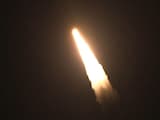Scientists are finding all sorts of weird worlds. They've now discovered a gas giant planet with the density of a marshmallow orbiting a cool red dwarf star located 580 light years from Earth. The planet, identified as TOI-3757 b, is the "fluffiest" ever found, according to the National Science Foundation's NOIRLab, which operates some of the telescopes used in the research.
As per a press release, the newly discovered exoplanet has a diameter of 150,000 kilometres, making it slightly bigger than our solar system's largest planet Jupiter. It orbits its host star once every 3.5 days. The research team calculated its average density as being 0.27 grams per cubic, which is about one-quarter the density of water - meaning it would float if placed in a giant bathtub filled with water.
Red Dwarfs are the smallest and dimmest stars that convert hydrogen into helium in their cores at a steady rate. Although they are much cooler than the sun, red dwarfs are known to be extremely active and launch powerful flares and as such make it rare for planets to form around them.
Also Read | NASA Sets Up Independent Scientific Team To Investigate UFO Sightings
"Giant planets around red dwarf stars have traditionally been thought to be hard to form," said Shubham Kanodia, a researcher at Carnegie Institution for Science's Earth and Planets Laboratory.
"So far this has only been looked at with small samples from Doppler surveys, which typically have found giant planets further away from these red dwarf stars. Until now we have not had a large enough sample of planets to find close-in gas planets in a robust manner," Mr Kanodia added, as per the press note.
The team of researchers said there are still unexplained mysteries surrounding TOI-3757 b - the biggest one being how the planet could have even formed, especially with its low density. However, they explained two main factors.
First, it could be possible that the planet has a lower number of heavy elements in its rocky core compared to other gas giants, which may have delayed how the gas accumulates and lowered its density. Second, it could be that the planet's slightly elliptical orbit results in substantial excess heating that can cause the planet's atmosphere to bloat.
Also Read | NASA's Spectacular Image Showing Remains Of Supernova Stuns Internet
"Potential future observations of the atmosphere of this planet using NASA's new James Webb Space Telescope could help shed light on its puffy nature," said Jessica Libby-Roberts, a postdoctoral researcher at Pennsylvania State University.
Astronomers believe that research could help them understand what the planets are made of and how they are formed. It could also help them learn more about the newly discovered exoplanet's strange atmosphere.















